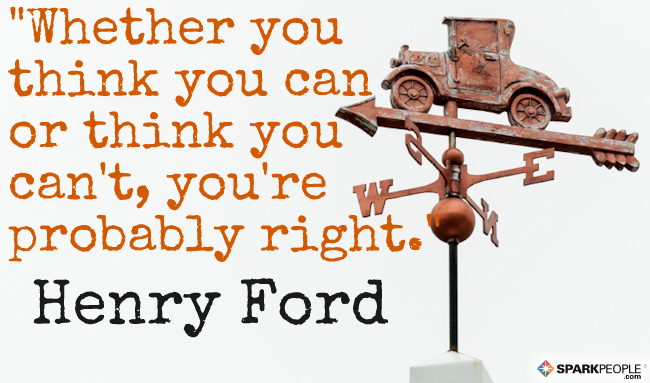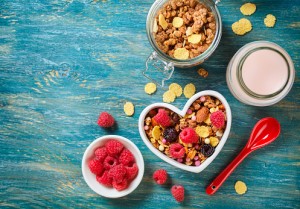Glycemic Index - The Basics
The glycemic index (GI) ranks carbohydrates in food on a scale of 0 to 100 by the effect they have on blood sugar levels after they are eaten. Your blood glucose rises and falls when you eat a meal containing carbs. How high it rises and how long it stays high depends on the GI and the quantity. A food's effect on one's blood sugar also depends on what is eaten at the same time, the portion size, and how it's prepared.
High GI foods are digested and absorbed quickly, which results in very noticeable fluctuations in blood sugar and insulin levels. Low-GI foods digest and are absorbed slowly, which causes only gradual rises in blood sugar and insulin levels. Carbohydrates that break down slowly and release glucose gradually into the blood stream are said to be more beneficial to your health.
Low GI diets have been shown to improve both glucose and lipid levels in people with diabetes. Additionally, a diet with a lower glycemic index is beneficial to weight management because it helps control appetite and delay hunger. Low GI diets also reduce insulin levels and insulin resistance.
As a companion to the GI, the glycemic load (GL) is more specific as it calculates the combined value of one or more foods' glycemic indexes. The GL can be used to show the effects of one food, a whole meal, a day's worth or many days' worth of meals. Glycemic load for a single serving of a food can be calculated by multiplying its GI by its carbohydrates and then dividing by 100. This number gives an idea of what effect a portion of the particular food has on blood sugar.
Some studies show that the glycemic load of a person's diet may be more significant than the glycemic index of the individual foods eaten. Results show that women with the highest glycemic load may have triple the risk of developing colorectal cancer than those with the lowest glycemic load. Additionally, men and women with the highest glycemic load were 80 percent more likely to develop colon cancer as compared to those with the lowest load.
It is recommended that you eat a diet emphasizing vegetables, fruits, whole grains and beans to help lower risk of cancers and heart disease. Recent studies have shown that individuals who followed a low GI diet over the years may have a significantly lower risk of developing type 2 diabetes and heart disease than others, taking into consideration the specifics of the two diets being compared. A high glycemic load may also raise the risk of uterine and stomach cancer by at least 24 percent as compared with lower glycemic loads. Diets that repeatedly raise blood sugar levels seemingly cause insulin levels to soar. Research has shown that insulin and insulin-related growth factors appear to promote the development of some cancers.
Keep in mind that a diet with a low glycemic load alone will not protect against disease. Other factors have to be considered such as the amount of vegetables, fruits and unrefined whole grains or amounts of meat that make up the diet. Additionally, a low-glycemic diet alone will not guarantee weight loss. Gaining or losing weight depends on the balance between the calories consumed and calories burned. It doesn't matter if you strictly eat only meals and snacks with a low glycemic load if you eat too much of it. You have to have an even balance of diet and exercise to keep from gaining weight.
Be sure to monitor portion sizes with foods like rice, pasta or noodles to keep the overall GL of your diet in check. While the benefits of eating low GI carbs at every meal are evident, you don't necessarily have to cut out all the high GI stuff. It's fine to enjoy baked goods and treats, just don't overdo it and be sure to combine those high GI products with protein foods and low GI carbs such as fruit or legumes to keep your overall GI at a medium level.
Low carb diets are popular in many countries, but especially in the United States. keep in mind, however, that eating a low-carb diet, if that diet consists of soft drinks and super-sized baked goods made with refined flour, are really not beneficial. It's more beneifical to eat high carb foods that are healthy than to eat low carb foods that aren't. If you eat at least one healthy, low GI food at each meal, there's a good chance that you're eating a diet that will help keep your blood glucose at a good level and provide you with the proper balance of carbohydrates, fats and proteins.
Foods with a GI of 55 or less are considered low GI and include foods like most fruits and vegetables (except potatoes), whole grains, low-fat yogurt, pasta, and even Peanut M & M's. Medium GI foods have a GI of 56 - 69 and include things like sugar, many types of candy bars, raisins, angel food cake, croissants, and some brown rices. Foods with a GI of 70 or more are high GI and some examples are corn flakes, rice cakes, jelly beans, bagels, baked potatoes, some white rices, and white bread. In addition, some reports have shown that alcoholic beverages have low GI values, although beer, as the exception, has a moderate GI. Recent studies have shown consuming an alcoholic beverage prior to a meal can reduce the GI of the meal by 15%.
-
15 Strategies for Holiday Eating Without Weight Gain
Are you one of those people who anticipate and dread the holidays a
-
Weight Loss GoalSetting For Success
If you were going to travel to the other side of the world, youd need
-
Youll Need Total Will Power To Undergo Weight Loss
How much will power does it take in order to go through the tormen
-
Herbs For Well Being - Is This An Excellent Tip Or A Poor Thing?
Ask the average American to define herbs
-
The Perfect Fattening Process For Animals And Humans
Farmers have discovered if they restrict the amount of food the animal
-
Ways To Get A Six Pack
A lot of men are wondering how to get a six pack. Those who already ha
- DON'T MISS
- How I Finally Lost 75 Pounds (After Failing For Years)
- 2 Ways to Safely Transplant Rose Bushes of Any Age
- Which one will give me my “sexy” back?
- Don’t Feel Discouraged When Losing Weight–Follow These Tips!
- A Beginners Guide to Protein Powders
- The Most Successful Weight Loss Infomercials
- Keys to Keeping Weight Off After Your Diet Plan
- Guilt-Free Diet Tips For Memorial Day
- Low Carb and Low Fat Diets...A Scam?!
- Weight Loss Surgery - What Other Options Are There?




